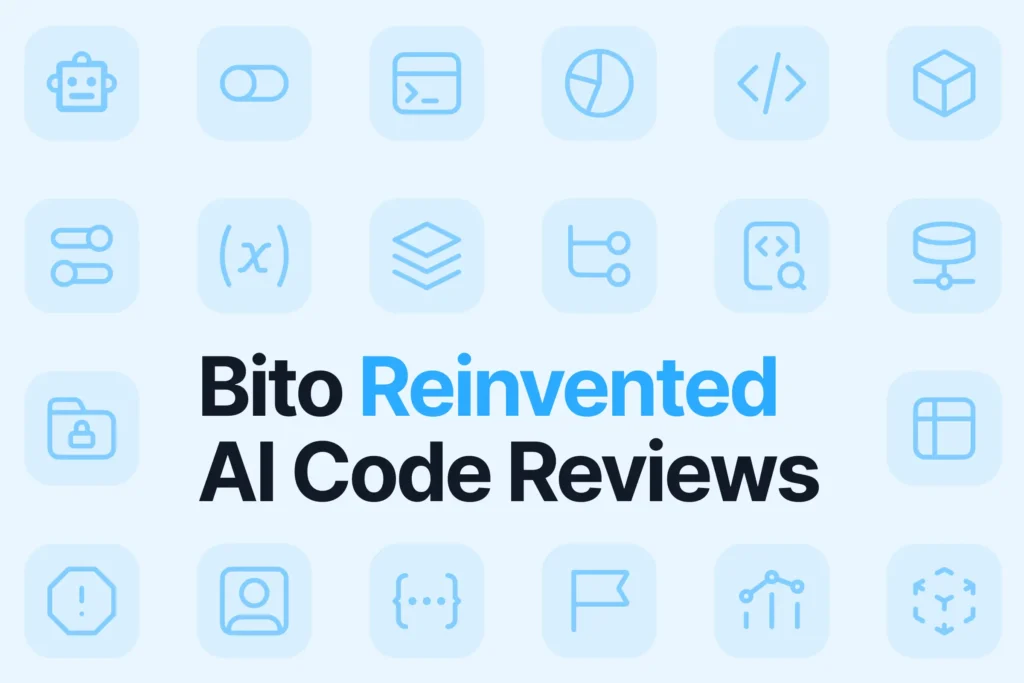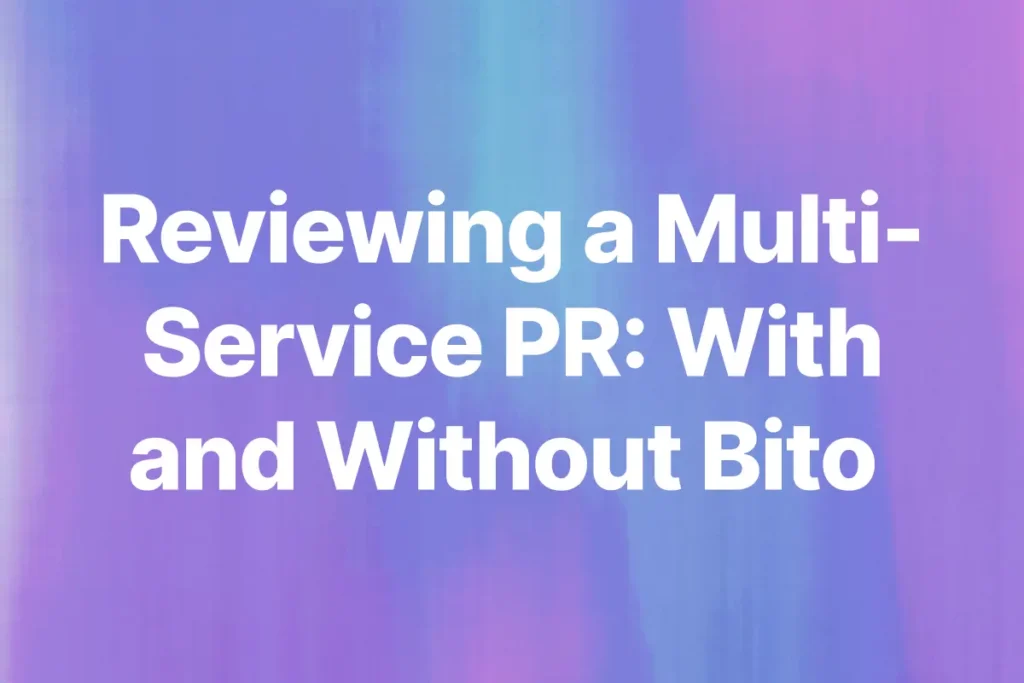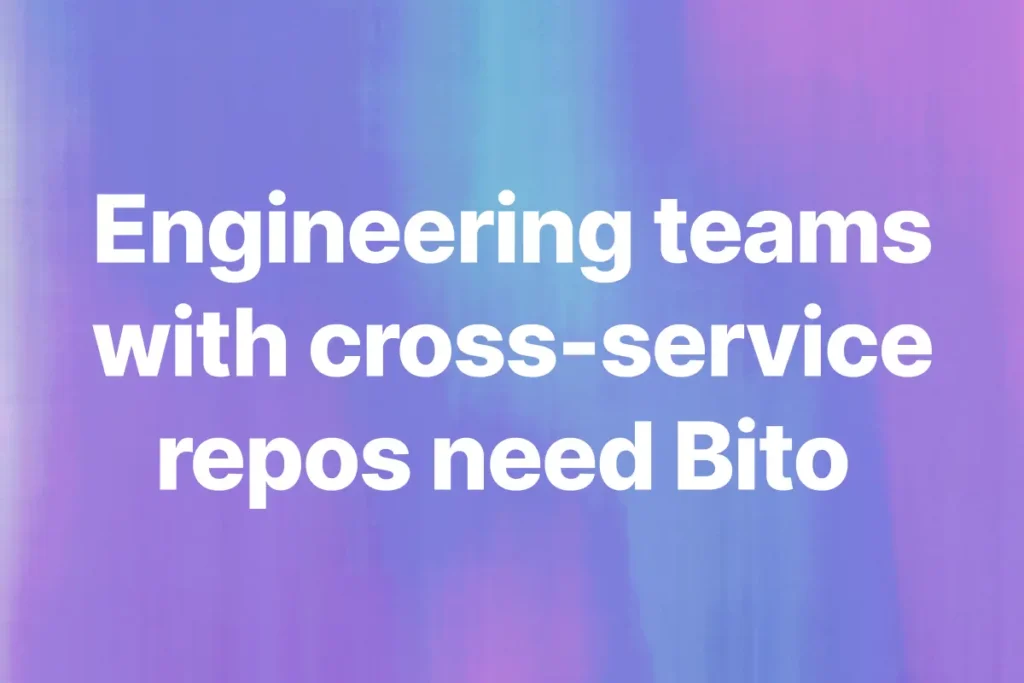A few weeks back Bito published a blog on Vibe Coding and the top 10 vibe coding tools you should know. That post gave a solid but general overview of vibe coding and the tools in the space.
But this blog is going to be a little different. Instead of just listing tools, I want to map them to the software development lifecycle (SDLC).
Code generation, debugging, reviews, documentation, and refactoring. Each stage now has a tool that fits into what people call vibe coding.
When I started out, writing code was more of a grind. You opened your IDE, wrote every line yourself, asked for help from Stack Overflow, ran into bugs, and spent hours going back and forth in reviews.
That was the old way. Now there’s this new trend of vibe coding.
Instead of doing everything manually, you lean on AI-powered tools that sit inside your workflow. They generate code, catch mistakes, and even write docs for you.
This blog is me breaking down which vibe coding tools actually fit into the SDLC, and where they make sense in practice.
TL;DR The vibe coding tools I use
Here’s how I map vibe coding tools to different stages of the software development lifecycle.
1. Coding and Debugging
- Cursor – AI editor built on VS Code, with inline completions, stack trace analysis, and bug-fix suggestions.
- Windsurf – Agentic IDE that automates context, works across repos, and helps debug large projects.
2. Code Review, Refactoring, Maintenance
- Bito – Deep, context-aware reviews in Git and IDE with custom rules, static analysis, and security checks.
3. Documentation and Knowledge Sharing
- Mintlify – Repo-aware documentation that stays synced with your code.
- Swimm – Turns real code into tutorials and onboarding guides.
Why vibe coding took off
Vibe coding is just a fancy way of saying coding feels lighter and more fun when the right tools are in place.
A good example is using Cursor or Windsurf. Instead of hunting down a bug through five files, you type the error into the IDE and the AI points you straight to the fix. That is vibe coding in practice.
Many developers wonder is vibe coding tools are free. Some of them have free tiers, but the truth is if you are using AI tools, they cannot be free forever.
Every time the AI generates code or analyzes your repo, it burns through tokens, and the product has to pay for those. So if you are serious about using Cursor, Windsurf, or Bito every day, you will end up paying.
And honestly, I think that is fair. You are paying for the compute behind the scenes and for the product polish that makes it usable.
Is it healthy or just fluff?
Is vibe coding the future or just a trend? I think it is both. The old way of coding was slow and manual. You debugged by hand, you wrote docs by hand, and reviews dragged on.
With vibe coding tools, the process feels less painful and you get into a rhythm faster. But if you only chase the vibes and never stop to think, your code can suffer.
For me, the balance matters. Use vibe coding to stay in motion, but always check if the fix is correct and the code is clean. The best developers I know enjoy the vibes, but they also know when to slow down and review with a critical eye.
Another popular question is whether there is a special IDE for vibe coding. The truth is you are not locked to one. Cursor is built on top of VS Code, Windsurf works with VS Code and JetBrains, and some people even call Bolt a vibe coding tool since it adds AI directly into the coding environment.
The point is not which editor you use, but how smoothly AI is baked into your workflow, or the software development lifecycle.
Vibe coding tools across SDLC
When I first started exploring vibe coding, I realized it’s not just about writing code faster. The real shift is how these tools fit into every phase of the software development lifecycle.
From coding to maintenance, there’s now an AI-powered tool that makes the work feel lighter and more natural. Let’s break it down stage by stage.
Coding and debugging
This is the heart of vibe coding. The feeling when you stay inside the editor, solve problems as they pop up, and never lose focus.
1. Cursor
When I used Cursor for the first time, I was blown away. It felt magic to me, but the platform structure was familiar.
Cursor builds on VS Code, so you get all the extensions and themes you’re used to, but with AI built in.
- Inline completions feel like a natural extension of your typing.
- It explains stack traces, suggests fixes, and even writes commit messages.
- You can manually load context like docs, git commits, or even web pages to guide the AI.
Use case:
I used Cursor on one of my older projects. It was able to explain parts of the flow that I had forgotten about, like how certain functions were linked together.
When I wanted to add a new feature, I asked for suggestions in a comment, and Cursor suggested perfect extensions to my codebase.
It also slotted the new logic into existing functions without breaking anything. It saved me from digging through files and wiring things manually. Super-fast and super cool!

2. Windsurf
If Cursor is about control, Windsurf is about automation.
Windsurf is built to handle bigger projects. It indexes the whole repo and even works across multiple repos. It integrates with both VS Code and JetBrains, and it runs fast, especially on Linux.
- Windsurf works across multiple repos and modules.
- Handles cross-dependencies, great for microservice setups.
- Integrated with VS Code and JetBrains IDEs.
Use case:
I used it for a project that had services split into different repos. Windsurf picked up the connections between them automatically, so I could follow how a function was being used across repos.
On top of that, I installed the Bito IDE extension inside Windsurf. That let me run AI code reviews directly from the editor, which I will get into later.

👉 If you want an in-depth comparison of these two AI IDEs for code generation, read this:Cursor vs Windsurf comparison.
Code reviews, Refactoring
This is the stage where vibe coding tools prove their real value. With AI generating 5 to 10 times more code than before, manual reviews alone are not enough. You need an AI reviewer that can keep up.
3. Bito
I use Bito almost every day. It has become the most reliable way to review code without missing important issues.
- It does context-aware AI code reviews in Git and IDE by looking beyond the diff and pulling in related code with embeddings and symbol indexing.
- It supports custom review rules. If I do not want it to flag something again, I can tell it to stop, and it learns.
- It layers in static and security checks, running tools like ESLint, Ruff, Mypy, Infer, Snyk, and detect-secrets alongside the AI analysis.
One example from my own workflow:
I have a PR in GitHub with more than 1,700 lines of changes across Java, Python, and JavaScript.

Without AI help, reviewing something that large would have taken hours. Bito summarized the entire PR in a few lines, then broke down the key changes file by file.
Here are some examples of the feedback I got from Bito in that PR:
- Static access violation in Java: It flagged that I had instance variables validCategories and categorySubcategories being accessed from a static method in ExpenseValidator.java. This would have caused a compile-time error. The bot not only highlighted the problem but also suggested making the fields static to fix it.
- Security vulnerability in HTML: In index.html, it found that category names were being added to the UI without sanitization, creating an XSS risk. It suggested adding input sanitization before saving category names.
- Incomplete sanitization in JavaScript: In app.js, I had added a sanitizeInput() function but forgot to apply it to the name field. Bito caught that and recommended updating the assignment to sanitizeInput(name.trim()).
- Faulty logic in date fallback: In my currency conversion logic, the fallback would sometimes return a future-dated exchange rate instead of the closest past one. Bito flagged the flaw and suggested a corrected fallback.
Video recommendation: In this video, I walkthrough this PR and demonstrate Bito’s Chat with your PR feature.
This is the kind of detail a human reviewer might miss in a quick pass, especially in a large PR. Having Bito point out 30+ issues, including security and logic bugs, made the review much faster and more reliable.
If you want a deeper breakdown of how this works under the hood, here is a good explainer: How Bito’s AI Code Review Agent Works.
If you want to see how Bito stacks up against others, you can check out these comparisons: Compare AI Code Review Tools.
Bito also launched its IDE extension in open beta. Watch the demo here:
Documentation
People don’t usually think of documentation tools as vibe coding tools, but I do. Because good code is useless if nobody can understand it later.
If we are comfortable generating code with AI and calling it vibe coding, then why stop there. AI code reviews, AI documentation, and refactoring are just as much a part of that vibe.
4. Mintlify
Mintlify connects to your repository and automatically creates documentation that stays updated. It does not just write generic API docs, it generates content based on the actual code and updates it as the code changes.
- Repo-aware documentation that updates with every commit.
- API references, function descriptions, and usage examples generated directly from your code.
- Keeps docs in sync so developers do not waste time maintaining outdated markdown files.
This helps with vibe coding because you can ship fast without worrying that your documentation will lag behind the code.
5. Swimm
Swimm turns code into tutorials and onboarding guides. Instead of reading stale Confluence pages, new developers can learn from real examples inside the repo.
- Generates step by step walkthroughs of how code works.
- Embeds real code snippets into the tutorial, so examples are always current.
- Reduces the tribal knowledge problem where important information lives only in senior devs’ heads.
This makes onboarding easier and keeps knowledge flowing across the team. More here.
Conclusion
Vibe coding tools work into every part of my workflow. Cursor and Windsurf help me stay productive when writing and debugging code. Bito makes large code reviews manageable, something humans alone cannot keep up with anymore. Mintlify and Swimm keep documentation current and useful.
Together, these tools change how the software development lifecycle feels. Work that used to be tedious now flows faster, and the quality of the output stays high. I do not see this as a short-term trend.
This way of working is already becoming the standard.
PS. In the words of Amar Goel, CEO of Bito:







